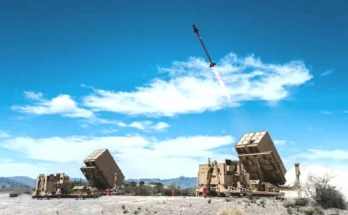India intends to forgo a planned acquisition of 114 foreign-sourced combat aircraft in favor of more indigenous Tejas Light Combat Aircraft (LCAs). The move comes a little over two years after the Indian Air Force (IAF) released a 72-page preliminary Request for Information (RFI) to foreign vendors on April 8, 2018. The RFI attracted responses from such manufacturers as Boeing, Dassault, Lockheed Martin, Saab and Sukhoi.
This roughly $20 billion project essentially amounted to a reboot of India’s failed “Mother of all Defence Deals” floated in 2007. That tender, falling under the 126-unit Medium Multirole Combat Aircraft (MMRCA) requirement, ultimately fell by the wayside in April 2015 due to the gulf in agreement between the competition winner, France’s Dassault (pitching its Rafale), and the Indian government over the transfer of technology requirements to India’s state-owned Hindustan Aeronautics Ltd (HAL).
In order to make up for an emerging fighter capability and capacity shortfall, Prime Minister Narendra Modi opted for an inter-government agreement with France in 2016 for the purchase of 36 Rafales in flyaway condition.
But this still left the IAF short of roughly 100 capable fighters with which to build out squadron capacity. The IAF has a requirement for 42 active fighter squadrons to defend against a collusive threat from China and Pakistan. However, it currently only has somewhere between 28 and 31 squadrons, leaving the IAF far short of optimal readiness.
The move to bypass the strategic partnership initiative and instead procure more Tejas LCAs appears to be financially driven at first glance. With the COVID-19 pandemic crippling the local and global economy, the Indian government will be forced to review all government spending in the near term. Military service branches, already feeling the pinch to their modernization budgets before the outbreak of COVID-19, will now be forced to economize further.
While India has long sought to increase the level of indigenous content in its military hardware in order to limit its exposure to foreign-sourced materiel, it has struggled mightily to achieve that goal. India remains a substantial net arms importer, with 70-75 percent of its armaments acquired through global suppliers. Thus the shift from seeking a foreign-sourced platform to the Tejas is as much – if not more- about keeping local industry humming during an economic slowdown while ensuring greater domestic defense content.
India seeks local warplanes as overseas purchase plan stalls
"The Indian Air Force is switching that to the LCA," CDS General Rawat said, when asked about the global tender for jets.https://t.co/QCmQvMXtj0 pic.twitter.com/ScSyBLWJcB
— The Times Of India (@timesofindia) May 15, 2020
The IAF has already ordered 40 units of the initial Mk 1 variant of the Tejas, plus 83 of the improved Mk 1A variant.
Future orders will be for Mk 2 variants, which are expected to be fitted with advanced radar and avionics and enhanced capability for carrying fuel and weapons. The Mk 2 models – expected to replace the legacy French-designed Mirage 2000 fighters – will be designated as medium-weight fighters due to the increased weight and weapons-carrying capacity of the upgraded platform.
The Mk 2 is not expected to be flight-tested until 2022 at the earliest. But faced with the prospect of taking up to two years simply to downselect a preferred fighter option – with no guarantee that after winding through the 11-step formal procedural process a contract would even come to fruition – the decision to opt for Tejas LCA Mk 2s to backfill numbers presents no more of a delay risk than the strategic partnership model.

Dan Darling is Forecast International’s director of military and defense markets. In this role, Dan oversees a team of analysts tasked with covering everything from budgeting to weapons systems to defense electronics and military aerospace. Additionally, for over 17 years Dan has, at various times, authored the International Military Markets reports for Europe, Eurasia, the Middle East and the Asia-Pacific region.
Dan's work has been cited in Defense News, Real Clear Defense, Asian Military Review, Al Jazeera, and Financial Express, among others, and he has also contributed commentary to The Diplomat, The National Interest and World Politics Review. He has been quoted in Arabian Business, the Financial Times, Flight International, The New York Times, Bloomberg and National Defense Magazine.
In addition, Dan has made guest appearances on the online radio show Midrats and on The Media Line, as well as The Red Line Podcast, plus media appearances on France 24 and World Is One News (WION).




